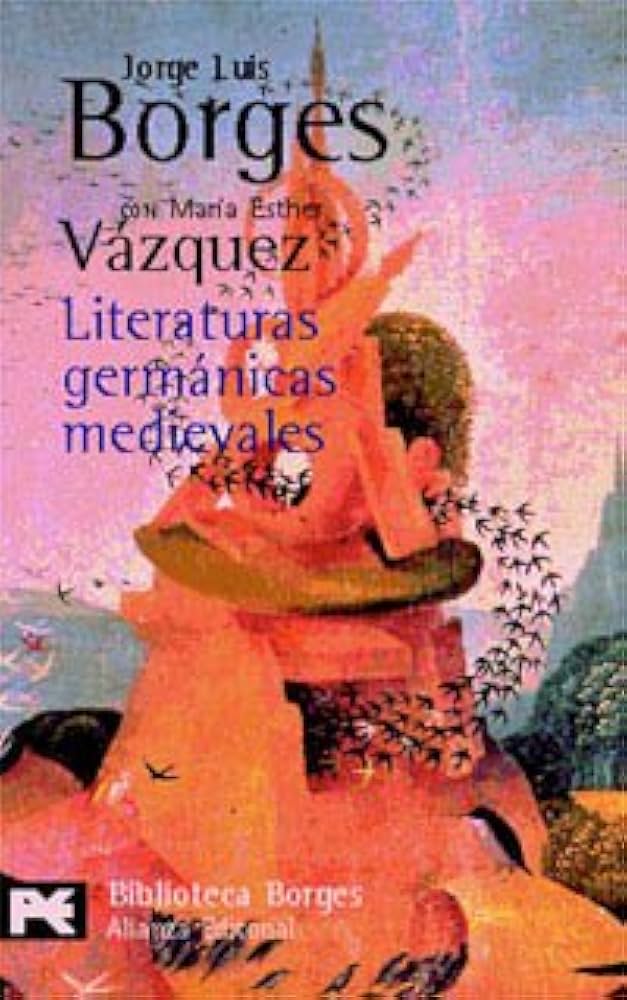NorsePlay Reviews: Borges' Ancient Germanic Literatures.
Discovering that celebrated Argentinian author, librarian, & intellectual Jorge Luis Borges wrote a survey called Ancient Germanic Literatures was like finding a hoard of gold in my backyard, and I finally got to open & read this brief book during my recent Scandinavian cross-Atlantic vacation.
As an investigative researcher, avid reader, Hispanic writer, and appreciator of Borges, I was totally enthusiastic to explore his insights into the sources from a Latin perspective I could personally identify with. Borges' masterful surrealism & erudition is pretty much second to none, so to turn that brilliant spotlight of his mind upon the deep dark wells of Norse source texts was such an exciting prospect.
Yet, not to criticize the Master, my essay & short fiction-bred high expectations of Borges were actually far beyond what his intention was, and the fault in doing that is solely mine. When writing Ancient Germanic Literatures back in 1951 CE, Borges primarily meant to provide a basic survey to the Spanish-speaking audience of that time. The 104-page book breaks the corpus down into three main headings: "The Literature of Anglo-Saxon England", "Scandinavian Literature", and "German Literature". He handily goes through the chronology of these, and briefly touches upon where the influence & overlap is within & between these occurs, and it feels for the most part like a very elegant version of complete course notes that I have to suspect were even more fine in the original Spanish than in M.J. Toswell's translation, but such are the limitations of linguistic transfers.
Nonetheless Borges' massive knowledge & bibliomantic recall with its ability to connect the dots has to be admired in a pre-internet world where one had no choice but the get all the physical books to do all the reading, and odds are not in your native language, and probably at that time many not even in English much less Spanish.
The work is not mistake free, and Toswell acknowledges this in his introduction. The interesting one that stood out to me was on p32-3 where Borges combines the disguised Odin's visit to King Olaf with immortal Norna-Gest's candle-burning conversion & death, but this and the very few other mistakes are nothing compared to the effective concision in the scope of the greater work, what with this being a first-time presentation to the Hispanic world at large.
I have to imagine that Borges had to go though pains to restrain himself from waxing & colouring this short work from the passionate enthusiasm that bore it, but there's a great part of me that wishes he'd given it a more interpretive Dumézilian treatment, that more of his original thought & voice were brought to celebrate & NorsePlay the material through his eyes. That Borges isn't entirely absent from the text in this fashion, and there are moments of his perspective & judgment, but for the most part it's utilitarian & functional, which is what the work sets out to do.
So if you're wanting Latin magical realism lensing the Norse Lore, this is not the yerba-maté horn of mead you might've hoped for, but if you need a 101-level survey of required Norse Lore literature & history, this Borges will give you the checklist with the important reasons it's on that checklist in the first place that you're going to need.
Guillermo Maytorena IV knew there was something special in the Norse Lore when he picked up a copy of the d'Aulaires' Norse Gods and Giants at age seven. Since then he's been fascinated by the truthful potency of Norse Mythology, passionately read & studied, embraced Ásatrú, launched the Map of Midgard project, and spearheaded the neologism/brand NorsePlay. If you have employment/opportunities in investigative mythology, field research, or product development to offer, do contact him.



Comments
Post a Comment